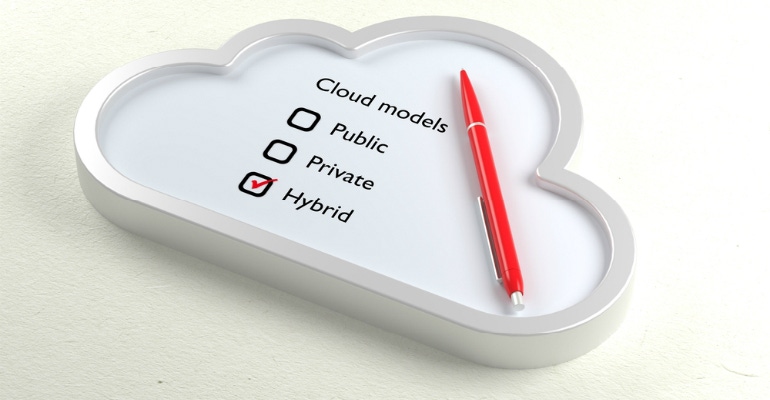Your customers need a solid hybrid IT strategy that fits their mission. There's a way to help them get there.
March 8, 2018

CloudGenera just might be the IT-decision-engine-delivered-as-a-service company you’ve never heard of.
With so many IT digital-service provider customers contemplating or undergoing digital transformation projects, it’s important to understand what a particular customer’s IT transformation should look like. Sometimes, you’re not aware of what a solid IT strategy looks like until you find yourself without one.
Channel Futures caught up with Jim Wittry, general manager, alliances and channel, at CloudGenera, to learn more about the company, solutions, channel strategy, and why the time is right for CloudGenera to get on partners’ radar — and vice versa. Wittry manages OEM alliance relationships with companies such as HPE, VMware, Oracle, Microsoft, AWS, Google, Nutanix, and also manages CloudGenera’s channel. Today, CloudGenera’s product is installed in almost 50 of the largest MSPs, systems integrators and service providers in the market.
The vendor’s customers are primarily in North America, but CloudGenera also does business internationally.
Channel Futures: What is CloudGenera?
Jim Wittry: We’re a five-year old company that launched in the marketplace about three-and-a-half years ago. We launched … with our partners with, what I’d say, reasonable success. The challenge is what we do. We’re really a strategy engine for helping people decide what their hybrid IT transformation needs to look like.

Jim Wittry
Jim Wittry
Everyone refers to this as cloud, but it’s really more than cloud — it’s private, hosted and public environments, and the ability for workloads to move from one to another, and it’s having a very controlled strategy around security, compliance, service-level agreements, as well as the associated total cost of ownership.
So, for all intents and purposes, we’re a strategy engine.
CF: So who needs a strategy engine and why?
JW: What I’ll call the business units around IT, were frustrated with how long it took IT to stand up applications. So, they all got excited about the cloud, and many of them went to the cloud. Unfortunately, business-unit managers don’t have the same discipline as IT, so they went with the illusion that cloud was going to be less expensive. The reality is, in most cases, it’s more expensive.
This did provide the business unit the agility and maybe speed to market, but now they’re getting their bills from Amazon, Microsoft and others, and realize it’s much more expensive for them, so they’re revisiting it. We’re also seeing a lot of activity where CEOs went to the cloud believing that it was going to be more efficient without doing any detailed research and without spending any quality time on security and compliance. And, by the way, the public cloud has gotten much better about security and compliance but it’s still a more expensive endeavor.
The other thing companies didn’t think through is that even if you did move to the public cloud, you can’t really eliminate the personnel you need to manage your own applications, your own databases and things like that. So there’s still a service component that needs to be a part of the decision process.
We don’t get caught up with what’s become an emotional or religious battle — public versus private cloud. We get involved with the data. You want to make an informed decision based on data, not emotion.
CF: Elaborate on this concept of a strategy engine.
JW: We create a hybrid IT blueprint, which involves taking a look at a company’s applications, running it through our algorithms and showing them the best venue to move, modernize or do nothing with a given application. Then we make recommendations on the best venue for an application to reside – and we go into the detail of what that’s comprised of – and the customer can do “what if” scenarios, say, if they want to containerize an application or if they want to compare our friends at Azure, Amazon and Google, if they want to compare public versus on-premises solutions from companies such as HPE, Dell or others. We give them a comparison tool and then we have the ability to adjust their whole inventory file and refine their model. And we have the ability to help them with the transformation and enrichment of their data, so they can make informed decisions.
CF: Who is the target CloudGenera customer?
JW: Our target market is mid-to-upper enterprise. Most of our clients are larger companies with multiple applications, and multiple instances where they run their applications; we help them reconcile that. For customers who are working with Microsoft Azure, AWS and others, we have the ability to help them with what we call spend optimization.
So, for example, with AWS, they’ve got thousands of offerings, and most of the market is confused trying to stay on top of the rapid changes and introductions from AWS and others. We function as a knowledge base for them. We have a repository of all of that data that we can call on to help [customers] understand how to optimize their spend.
We do service the SMB, but the reality for most SMB customers is that they have small workload environments, and most aren’t very evolved in a cloud strategy.
CF: Where do partners fit into the company’s strategy?
JW: We’re channel-centric and work with a wide-ranging partner community — SIs, service providers, MSPs, VARs and distribution. We’re evolving our born-in-the-cloud partner community as well.
I know you’ve read some of my comments about the channel … the channel has been, primarily, hardware-centric and moving up into the applications, the middleware and things like that. It’s an evolution that they’re all going through. I think they all know they have to get more active in the full stack; it’s just that many of them are having trouble getting out of their own way — changing an existing business model that works.
CF: CloudGenera has relationships with distribution, right?
JW: Our current authorized distributors are Arrow and Tech Data/Avnet, and we work with Ingram Micro and Synnex as well. These relationships are multifaceted in that we provide our platform capabilities to help with presales, resell and professional services.
However, let me clarify, the [distribution] partners that are really leaning in and are active are Arrow and Tech Data/Avnet. Ingram has not really formalized the relationship with us and neither has Synnex, but they have the rights to sell our product through their relationship with HPE.
Ingram and Synnex, being very SMB-focused, they’re struggling to really get to the upper-level application area and have professional services that understand it. They’re doing a good job reselling public cloud to the SMB marketplace from companies such as [Microsoft] Azure and AWS, but as far as helping customers with the planning or what I call strategy, they’re still evolving.
CF: Where’s the awareness, or maturity, among partners to jump in and offer their customers the Hybrid IT Blueprint Service?
JW: On the maturity curve, I’d say that we’re just now on the uptick of that maturity. There were people having these discussions, but they were very ancillary. What has happened in the channel, they’re beginning to realize that their business is at risk of moving to an Amazon, an Azure or someone else, where they have no revenue stream. So that’s an awakening that’s been happening over the last 12 months.
With the corporations, there’s enough press now about the people who went to public cloud only to be surprised by the cost. So I’d say we’re just now at what I’d all the earliest phase of recognition that this is a problem — for IT departments, for business unit leaders and for companies.
When we started a few years ago, this was really evangelism and education. We’re now seeing the business demand take off.
About the Author(s)
You May Also Like


